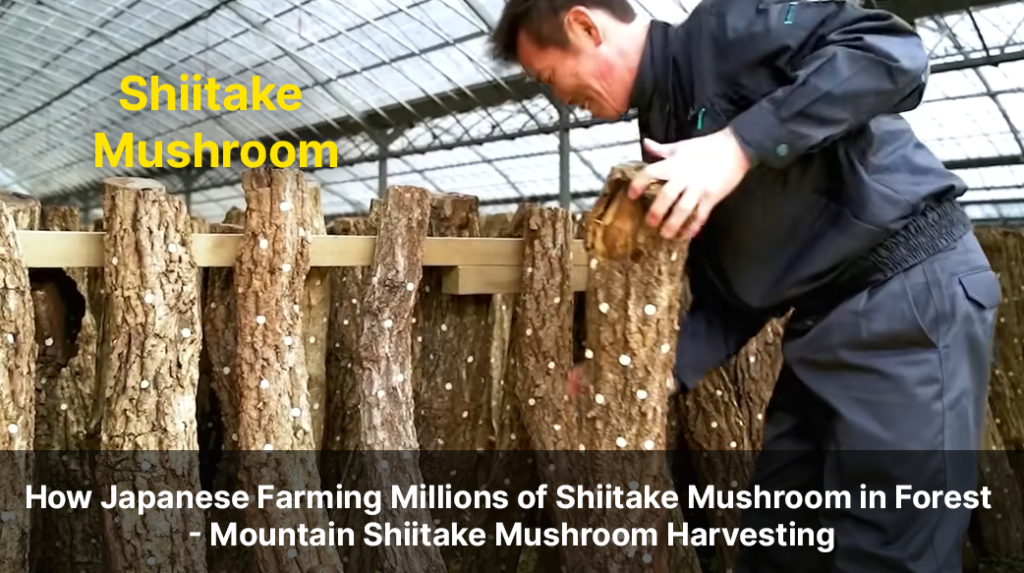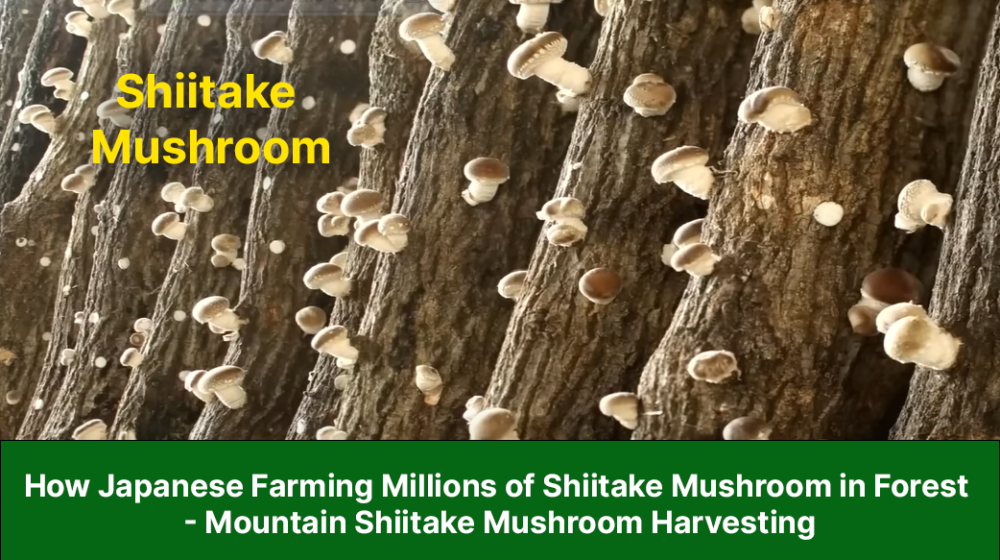Shiitake mushrooms, known for their rich flavor and numerous health benefits, are extensively cultivated in Japan using traditional methods. One unique approach is the cultivation of shiitake mushrooms in forests and mountains, utilizing natural resources and maintaining the symbiotic relationship between trees and fungi. This article explores the traditional Japanese farming practices for cultivating shiitake mushrooms in forest environments.
Traditional Japanese Shiitake Mushroom Cultivation
Cultivation in Forests and Mountains
In Japan, shiitake mushroom cultivation has a long history, with farmers utilizing forests and mountains as the ideal environment for their growth. Rather than growing them in controlled indoor environments, shiitake farmers prefer to mimic the natural conditions found in the forest. This approach involves selecting suitable trees, inoculating them with mushroom spawn, and allowing the mushrooms to grow and mature in a symbiotic relationship with the trees.
Utilization of Natural Resources
Japanese farmers take advantage of the abundant natural resources available in forest environments. They carefully select specific tree species, such as oak or beech, that provide optimal growing conditions for shiitake mushrooms. The trees are chosen based on their ability to provide necessary nutrients and moisture to support mushroom growth. By utilizing natural resources, farmers minimize the need for artificial inputs, creating a sustainable and environmentally friendly cultivation method.
Sustainability and Environmental Benefits
Forest cultivation of shiitake mushrooms offers several environmental benefits. The method relies on the sustainable management of forests, ensuring the long-term health and vitality of the ecosystem. The cultivation process helps maintain biodiversity, as the mushrooms contribute to the decomposition of organic matter, recycling nutrients back into the forest soil. Additionally, forest cultivation reduces the need for land clearing, preserving natural habitats and preventing soil erosion.
The Process of Shiitake Mushroom Cultivation
Selection of Suitable Trees
To start the cultivation process, farmers select suitable trees that provide the necessary growing conditions for shiitake mushrooms. Trees with a diameter of approximately 10-20 centimeters are preferred, as they offer a balance between the mushroom yield and the time required for the mushrooms to grow. Oak and beech trees are commonly used due to their compatibility with shiitake mushroom cultivation.
Inoculation and Spawn Preparation
Once the trees are selected, farmers inoculate them with shiitake mushroom spawn. The spawn consists of mycelium, the vegetative part of the mushroom, which is mixed with a substrate such as sawdust or wood chips. The spawn-infused substrate is then placed into drilled holes in the selected trees. The mycelium grows and colonizes the tree, forming a symbiotic relationship.
Log Stacking and Maintenance
After inoculation, the logs are stacked in a shaded area to provide the ideal growing conditions for the mushrooms. The logs are often arranged in layers, creating a conducive environment for mushroom development. Regular watering and maintenance ensure proper moisture levels, promoting mushroom growth. Over time, the mycelium spreads through the logs, and mushrooms begin to form.

Harvesting and Yield
Shiitake mushrooms typically take several months to grow and mature. Once the mushrooms reach the desired size and develop their characteristic umbrella-shaped caps, they are ready for harvest. Harvesting is done by hand, carefully plucking the mushrooms from the logs. The yield depends on various factors, including the number of logs, tree species, environmental conditions, and the farmer’s expertise.
Benefits of Japanese Forest Shiitake Cultivation
High-Quality and Nutritious Mushrooms
Shiitake mushrooms grown in forest environments are known for their superior quality and taste. The slow growth process and natural habitat contribute to their dense texture, rich flavor, and nutritional value. Forest-grown shiitake mushrooms are highly sought after for their unique umami taste and various health benefits, including immune system support and potential anti-inflammatory properties.
Economic Opportunities for Local Communities
Forest shiitake cultivation provides economic opportunities for local communities in Japan. Many small-scale farmers and rural communities engage in shiitake cultivation, which serves as a source of income and employment. The cultivation method preserves the cultural heritage associated with traditional farming practices, creating a sense of pride and identity within these communities.
Preservation of Forest Ecosystems
By cultivating shiitake mushrooms in forests, farmers contribute to the preservation of forest ecosystems. Forests play a vital role in carbon sequestration, water conservation, and habitat protection. The symbiotic relationship between shiitake mushrooms and trees ensures the health and vitality of the forest ecosystem, fostering biodiversity and promoting ecological balance.
Cultural and Culinary Significance
Shiitake mushrooms hold cultural and culinary significance in Japan. They are widely used in traditional Japanese cuisine and are incorporated into various dishes, such as soups, stir-fries, and sushi. Forest cultivation of shiitake mushrooms not only sustains the culinary traditions but also highlights the connection between nature, food, and culture.
Challenges and Considerations
While forest shiitake cultivation offers numerous benefits, there are challenges to be considered:
Weather Conditions and Seasonal Variations: Weather fluctuations and seasonal variations can affect mushroom growth and yield. Farmers must adapt their cultivation practices and manage environmental conditions accordingly.
Pest and Disease Management: Forest environments can harbor pests and diseases that may impact shiitake mushroom cultivation. Farmers employ various methods, such as proper hygiene practices and monitoring, to prevent and control infestations.
Market Demand and Competition: The success of a shiitake cultivation business relies on market demand and competition. Farmers need to understand consumer preferences, develop effective marketing strategies, and differentiate their products to stand out in a competitive market.
Japanese forest cultivation of shiitake mushrooms showcases a traditional and sustainable approach to farming. By leveraging natural resources and maintaining the symbiotic relationship between trees and fungi, farmers produce high-quality mushrooms while preserving forest ecosystems. This cultivation method not only provides economic opportunities but also maintains cultural and culinary traditions associated with shiitake mushrooms.
FAQs
- What are the health benefits of shiitake mushrooms?
- Can shiitake mushrooms be cultivated indoors?
- Is it possible to start a shiitake mushroom cultivation business outside of Japan?
- How long does it take for shiitake mushrooms to grow?
- Are there any specific regulations for shiitake mushroom cultivation?
